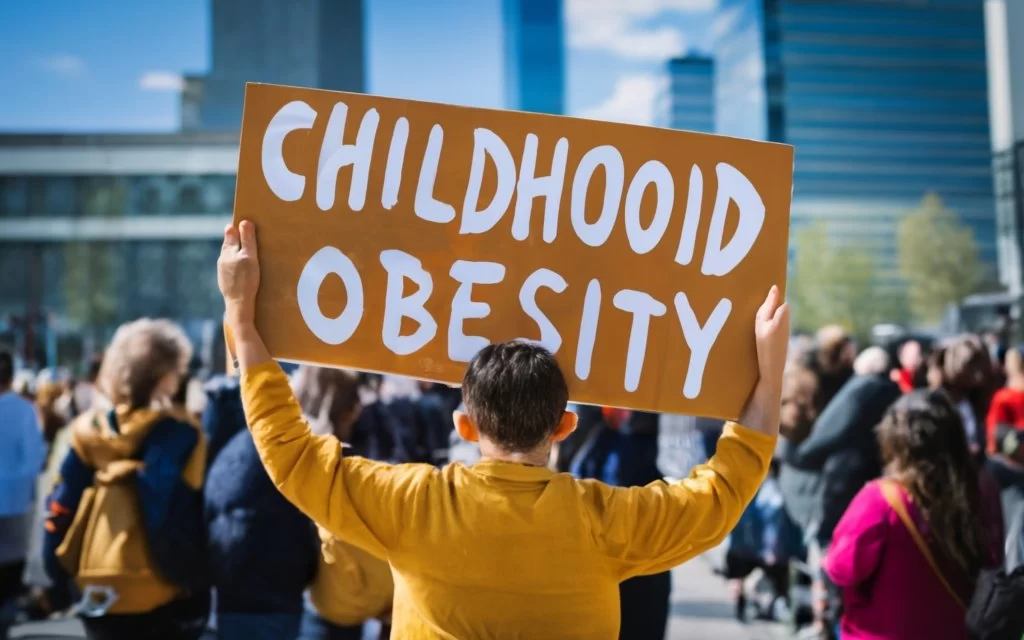Childhood obesity is a pressing public health concern that demands our attention. As we delve into the depths of this issue, understanding its intricate web of causes becomes imperative. This article aims to shed light on the primary causes of childhood obesity, guiding you through the factors contributing to this growing epidemic.
The Urgent Need to Address Childhood Obesity
Childhood obesity is not merely a matter of aesthetics; it carries profound health, social, and economic consequences. With rates soaring at alarming levels, it’s crucial that we comprehend the underlying factors. According to the Centers for Disease Control and Prevention (CDC), childhood obesity affects millions of children in the United States alone, predisposing them to a host of health problems in adulthood.
Moreover, the American Heart Association warns that childhood obesity significantly increases the risk of cardiovascular diseases, type 2 diabetes, and various other health complications. This ominous cloud over our children’s health necessitates immediate action.
Now, let’s embark on a journey to uncover the multifaceted causes of childhood obesity.

Causes of Childhood Obesity
Section 1: Poor Diet
Unhealthy Food Choices
- Processed Foods: One of the major culprits behind childhood obesity is a diet rich in processed foods. These items, often high in sugars, unhealthy fats, and calories, contribute significantly to weight gain.
- Sugary Beverages: Excessive consumption of sugary beverages such as sodas and fruit juices can lead to increased calorie intake without providing necessary nutrients.
- Fast Food: The prevalence of fast food consumption has risen, offering convenient but calorie-dense options that can drive obesity rates skyward.
Lack of Nutritional Education
- Limited Nutrition Knowledge: Lack of nutritional education can result in poor food choices. Children may not understand the importance of balanced diets, portion control, and healthy food selection.
Food Accessibility
- Food Deserts: In areas with limited access to fresh and nutritious foods, known as food deserts, residents often rely on convenience stores and unhealthy options due to the absence of nearby grocery stores offering healthier alternatives.
Emotional Eating
- Emotional Factors: Emotional eating can be a significant contributor to childhood obesity. Children may turn to food for comfort during times of stress, anxiety, or sadness, leading to overeating and unhealthy food choices.
Sedentary Lifestyle
- Physical Inactivity: A sedentary lifestyle plays a pivotal role in the childhood obesity epidemic. Children who spend excessive time sitting or engaged in screen activities are at risk of obesity.
Now, let’s delve deeper into the second category of causes:
Read More: fruits for weight loss and glowing skin
Section 2: Lack of Physical Activity
Screen Time and Technology
- Sedentary Behaviors: The prevalence of technology has brought about increased screen time for children, which often replaces active play and physical activity.
Reduced Physical Education
- School Programs: Over recent years, there has been a decline in physical education programs in schools, reducing opportunities for children to engage in structured physical activities.
Safety Concerns and Outdoor Play
- Safety Issues: Safety concerns related to outdoor play can hinder physical activity. Parents may limit outdoor playtime due to worries about accidents or crime.
Parental Involvement
- Supportive Environment: Parental involvement is crucial for promoting physical activity. Parents who actively engage in physical activities with their children create a supportive environment that encourages active lifestyles.
Now that we’ve explored the impact of physical activity, let’s move on to the next set of factors:
Section 3: Genetics and Family History
Genetic Factors
- Inherited Traits: Genetics can predispose individuals to obesity. Some people may inherit genes that affect their metabolism or appetite regulation.
Family Lifestyle and Habits
- Behavioral Patterns: Family lifestyle and habits significantly influence a child’s eating and physical activity patterns. Unhealthy family behaviors can increase the risk of childhood obesity.
Childhood Obesity Trends
- Alarming Statistics: Understanding childhood obesity trends is essential. Over the years, the prevalence of childhood obesity has increased dramatically, highlighting the urgency of addressing this issue.
Now, let’s turn our attention to the final category of factors:
Read More: can you take fiber supplements on keto
Section 4: Socioeconomic Factors
Income Disparities
- Economic Challenges: Income disparities can impact a family’s ability to access nutritious food options. Lower-income families may face difficulties affording healthy foods, increasing the likelihood of obesity.
Access to Healthcare
- Healthcare Barriers: Limited access to healthcare can hinder early intervention and obesity prevention efforts. Regular medical check-ups and guidance are vital in managing childhood obesity.
Community Environment
- Neighborhood Influence: The community environment plays a significant role in shaping behaviors related to childhood obesity. Access to safe parks, recreational facilities, and healthy food outlets can influence a child’s lifestyle choices.
Understanding these multifaceted causes of childhood obesity is the first step toward effective prevention and intervention strategies. In the following sections, we will explore potential solutions and initiatives aimed at tackling this critical issue.
FAQs (Frequently Asked Questions)
FAQ 1: What are the long-term health effects of childhood obesity?
Childhood obesity is not a fleeting concern; its repercussions extend well into adulthood. Some of the long-term health effects include:
- Cardiovascular Issues: Childhood obesity significantly raises the risk of heart diseases like hypertension and atherosclerosis in adulthood.
- Type 2 Diabetes: There is a heightened likelihood of developing type 2 diabetes, a condition marked by insulin resistance and high blood sugar levels.
- Joint Problems: Excess weight can lead to severe joint problems like osteoarthritis, causing pain and reduced mobility.
- Mental Health Challenges: Childhood obesity can contribute to mental health challenges, including depression and low self-esteem.
These long-term consequences underscore the urgency of addressing childhood obesity as a critical public health issue.
Read More: best fruits for kids
FAQ 2: How can childhood obesity be prevented?
Preventing childhood obesity requires a multifaceted approach involving families, schools, communities, and policymakers. Here are some practical tips and strategies:
- Promote Healthy Eating: Encourage the consumption of nutrient-rich foods like fruits, vegetables, and whole grains while limiting sugary snacks and beverages.
- Increase Physical Activity: Advocate for at least 60 minutes of daily physical activity for children. Encourage active play and sports.
- Educate Families: Provide nutrition education to families to help them make informed food choices.
- Supportive School Environments: Schools can play a crucial role by offering healthy meals and physical education programs.
- Community Involvement: Communities should create safe play spaces, and local governments can improve access to affordable healthy foods.
- Policy Changes: Advocate for policy changes at local and national levels, such as sugar-sweetened beverage taxes and improved food labeling.
Prevention efforts should start early and be sustained throughout a child’s development to have the most significant impact[^1^][^2^].
FAQ 3: Are genetics the sole cause of childhood obesity?
No, genetics alone are not the sole cause of childhood obesity. It’s essential to understand that childhood obesity is a complex condition influenced by both genetic and lifestyle factors. While genetics can predispose individuals to obesity by affecting metabolism and appetite regulation, lifestyle choices, such as diet and physical activity, play a substantial role. These factors interact, making it crucial to adopt a holistic approach to address childhood obesity effectively. By promoting healthier lifestyles, educating families, and creating supportive environments, we can mitigate the impact of both genetic and lifestyle factors.
These frequently asked questions provide insight into the complexities of childhood obesity and offer guidance on how to address and prevent this critical public health issue.
Read More:
Discover the Future of Fitness with ZTEC100 Tech Fitness
HIIT Workouts at Home: No Equipment Needed – Get Started!
10 health benefits of chia seeds for weight loss
The Flavors of Health: Exploring the Health Benefits of Indian Cuisine


